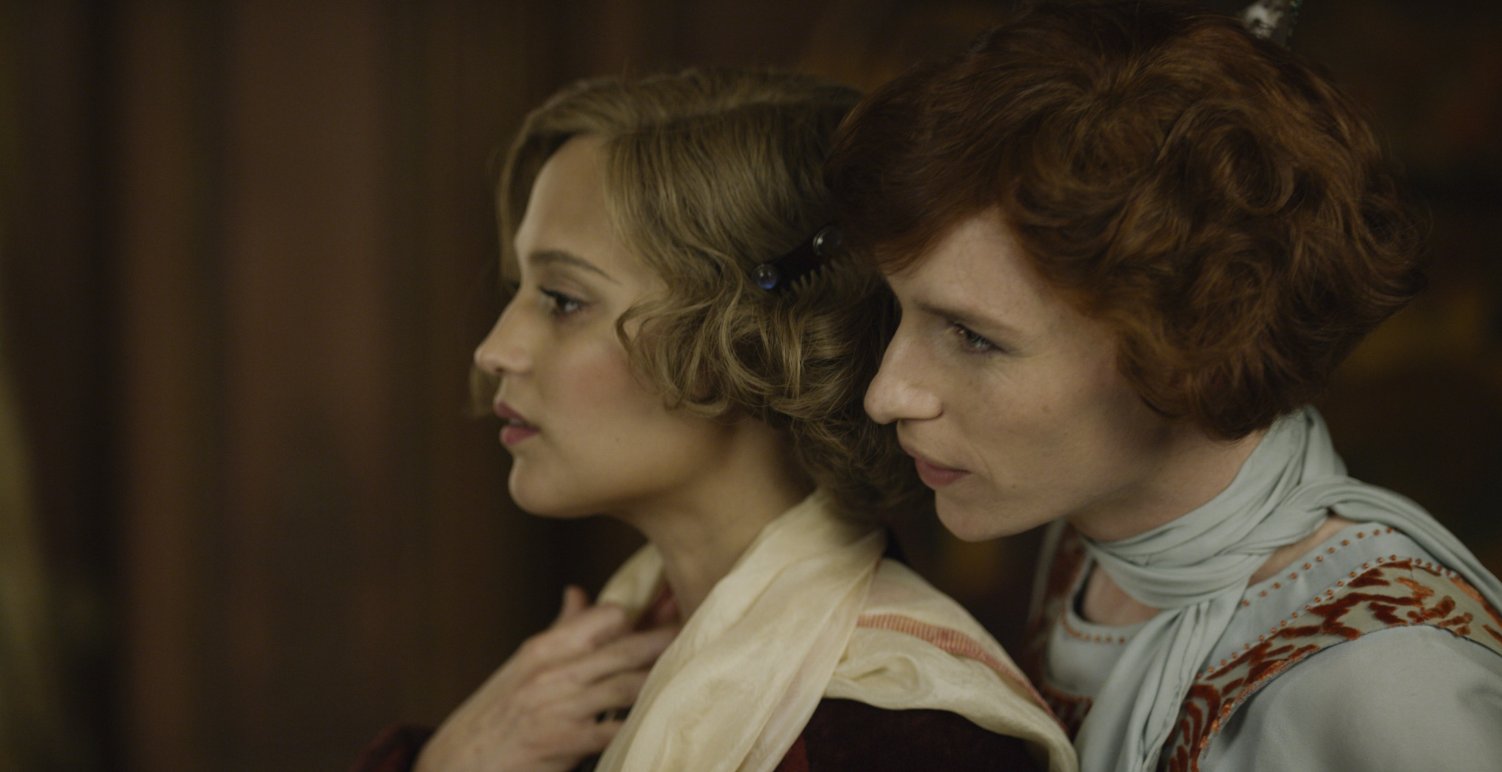Today, movies about LGBTQ characters are often relegated to a subgenre—Netflix has a whole category of “Gay & Lesbian” movies that is often left untouched by many simply because of its labeling. The Danish Girl transcends this entrapment—and is already rolling in Oscar buzz, among other nominations, as we approach awards season. Powerful performances and immaculate direction have spun a story about transitioning genders that, above all, plays upon the family and marriage strains that arise when life as we know it is uprooted.
The Danish Girl, directed by Tom Hooper (The King’s Speech, Les Misérables), is based on David Ebershoff’s 2000 novel of the same title. It tells a dramatic version of the real-life story of Lili Elbe, one of the first documented people to undergo sex reassignment surgery. After painter Gerda Wegener (Alicia Vikander) asks her artist husband Einar Wegener (Eddie Redmayne) to pose as a female model, Einar begins to present as Lili Elbe. While the couple struggles to navigate medical attitudes towards transexuality in 1920s Europe, Gerda’s artwork finally gains prominence through her portraits of Lili. Amidst the disintegration of their marriage, their love persists, and Gerda must support Lili and herself as they embark upon this transition.


IMDb
Though the choice of cisgender Redmayne to play a transgender woman was controversial, the Academy Award-winning actor is a delight to watch. Lili is breathtaking when she delicately examines the silk of a nightgown with her fingers or the reflection of her lips in the mirror—Redmayne divulges intense emotion not through words or facial expression, but through his hands. When Einar observes ballerinas, Redmayne’s face observes not with lust, but with wonder and longing. Combined with Alexandre Desplat’s (The Grand Budapest Hotel) immersive score and delicate editing decisions, every moment of discovery becomes as climactic as a scene from an adventure movie. At the end, as Lili waits to undergo surgery, her raw crying is heard over a track so silent that you can hear the white noise crackling.
Much of the movie’s dynamism is derived from its nearly equal focus on the film’s other “Danish Girl.” In fact, when “the Danish girl” is first spoken, it is in reference to Gerda, instead of Lili. Vikander is enchanting from the beginning. She constantly keeps the audience on edge, unsure of how she will react to Einar’s changes up until the very last moment. Her chemistry with Redmayne is undeniable, and the love between Gerda and Lili is obvious in every interaction. Vikander delivers dialogue with a splendid combination of poignancy and wit. She, too, artfully employs both facial and physical acting as she treads a fine line between confusion and support for Redmayne’s character.
The film’s darker moments emphasize how little has changed in the last 100 years for transgender people. A scene in which Lili is attacked is eerily similar to hate crimes that go unnoticed and unpunished every day in 2015. Some doctors’ responses to Lili and Gerda echo transphobic views that are still held today. The Danish Girl takes a clear stance on what it means to Lili to be transgender when the character says, “God made me a woman,”—it is nature’s mistake that she ended up in the wrong body. The script and characters continually emphasize the high risk of fatality associated with the surgery, extremely new as it was in the 1920s. Lili’s determination to undergo surgery even so, and the frustration Redmayne conveys as she tries to explain this, emphasize the pain she feels from being trapped in a body that is not her own.
Ultimately, The Danish Girl builds upon themes relatable to any socially conscious viewer. The film explores society’s enduring treatment of gender when Gerda teaches Lili that as a woman, she is expected to be flattered by unwanted stares or conversation. But underneath the issue of identity lay other tensions. Gerda must compete with Einar, an even more acclaimed painter than herself. And though Lili is the protagonist of the movie, she is not without faults. Instances where Lili cheats on her wife and fails to meet the supportive Gerda halfway make Lili a multifaceted character, instead of a martyr. As Lili begins to take shape, Gerda mourns the loss of her husband and the death of her marriage. Vikander conveys Gerda’s experiences with the universal sadness and self-pity one feels in an experience of mourning.
As we enter awards season, there is no doubt that The Danish Girl is a strong contender. Redmayne, Vikander, and Hooper have all garnered numerous nominations so far, most notably for Golden Globe and Screen Actors Guild awards, and all three certainly deserve Oscar nominations in their respective categories. The film is at once tragic and charming. Incredible, intimate performances from Redmayne and Vikander combined with a layered thematic structure and engaging directorial decisions make The Danish Girl a true masterpiece.





